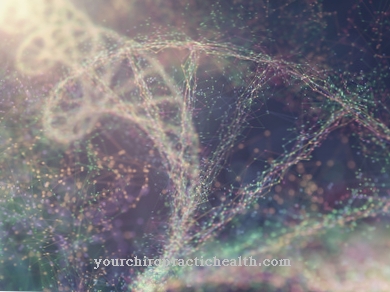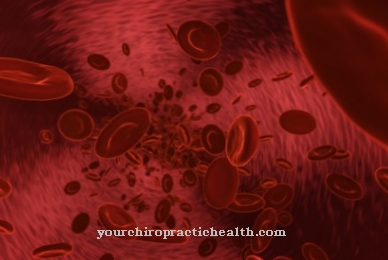The Nidation refers to the implantation of a fertilized egg cell in the lining of the uterus. This develops into the placenta to supply the egg after implantation. From the time of implantation, the woman is considered pregnant.
What is nidation?

An egg cell is fertilized on its way from the ovary to the uterus, mostly in the fallopian tube. Late fertilization can take place even after the egg has been accepted in the uterus. During the maturation of the egg, the lining of the uterus has thickened in preparation for fertilization. A sufficiently thick mucous membrane is a prerequisite for implantation.
The egg cell is much larger than a sperm because it has to be able to feed itself for a while. After fertilization, almost all of her resources are used up, but right now she needs the energy for the upcoming cell division. She gets this through the nidation, which connects her to the supply system of the woman's body.
The egg cell sits on the surface of the uterine lining and is absorbed and enveloped by it. The mucous membrane forms blood vessels that lead to the fertilized egg cell in order to be able to supply it with dissolved nutrients. In this way, thanks to nidation, it can continue to live, although its own energy resources have already been used up.
Following the nidation, the woman is considered to be pregnant, as the embryo is now developing and in most cases the egg cell no longer dies.
Function & task
An egg cell alone can only supply itself for as long as it takes to travel from the ovary to the uterus. If it is not fertilized, it dies because it no longer has any energy or any use. A fertilized egg cell, on the other hand, has to go through several cell division processes and develop an entire embryo with a large number of cells from a single cell. With her own almost exhausted energy resources she cannot do this, nor can the sperm supply her with the energy it needs. What she needs is energy from the mother's body.
This is why the lining of the uterus is intended for implantation because this tissue is able to form a supply organ that only develops during pregnancy: the placenta. After implantation, the existing mucosal tissue collects in one place and forms blood vessels to supply the egg cell. The placenta, which begins to develop immediately after implantation, supplies the embryo for nine months and is then rejected at birth.
The first step in the development of the placenta is nidation. At the same time, nidation means a change in the hormonal balance, as the body now recognizes that the egg cell has been fertilized and that a pregnancy exists. Soon after the egg cell has been successfully implanted, the first physical signs of pregnancy appear.
You can find your medication here
➔ Medicines for menstrual crampsIllnesses & ailments
The implantation itself is a relatively simple process, which in itself is error-free in most cases. However, the lining of the uterus may not be thick enough for implantation and it may fail as a result. Other problems with the lining of the uterus, such as endometriosis, can also prevent nidation and thus pregnancy.
Usually such difficulties have hormonal causes or diseases such as endometriosis, which lead to changes in the structure and spread of the mucous membrane. Since then often no nidation can take place, affected women cannot become pregnant without help.
Even completely healthy women can develop a so-called ectopic pregnancy, which is associated with implantation. In this case, the egg does not embed itself in the uterine lining as intended, but remains in the fallopian tube after fertilization or develops in another place in the abdomen outside the uterus. Ectopic pregnancies can be dangerous as the egg usually dies and releases toxins that can be life-threatening for the woman. If detected too late, there is a risk of blood poisoning.
An implantation outside the uterus, from which an embryo nevertheless forms, is extremely rare. In these cases, the baby is actually developing in the mother's abdomen. Under certain circumstances and with constant medical supervision, such a baby can be carried to term, but cannot be born naturally. However, such a faulty implantation creates a great health risk for the mother, since the internal organs have no protection from the baby. There is also no guarantee that the child will be viable and healthy.
In cases of faulty cell division after implantation, the already fertilized egg cell is rejected by the woman's body and excreted as a hemorrhage - sometimes unnoticed. If the child were viable, the pregnancy would persist after implantation, but the child would then be born with a disability.













.jpg)

.jpg)
.jpg)











.jpg)